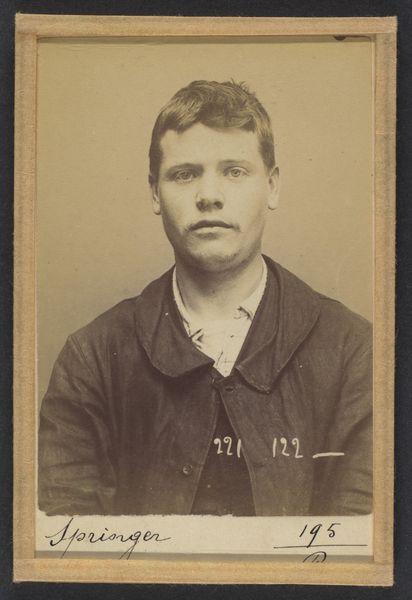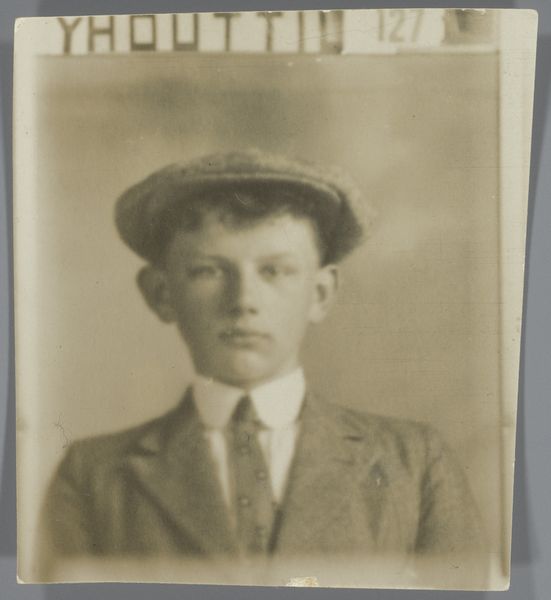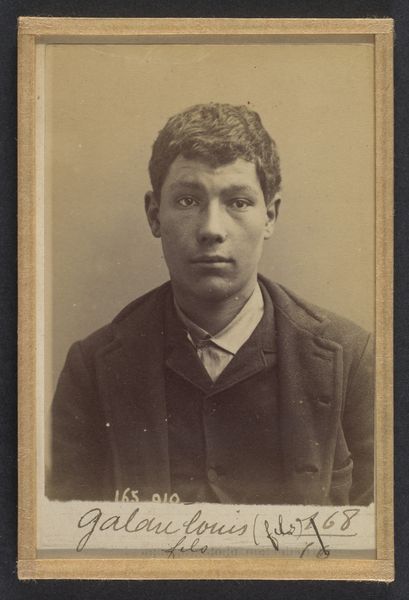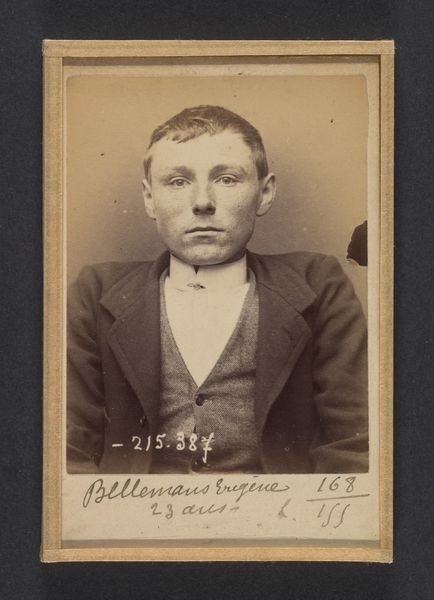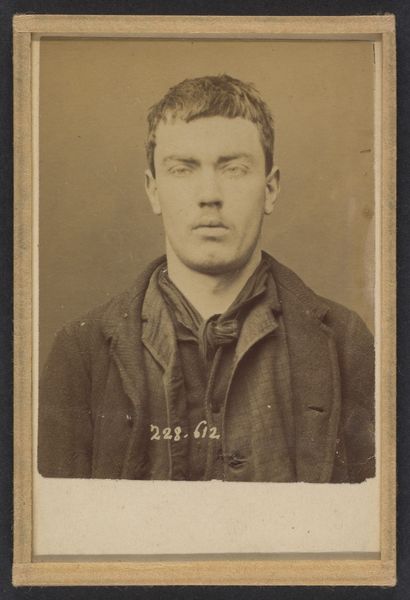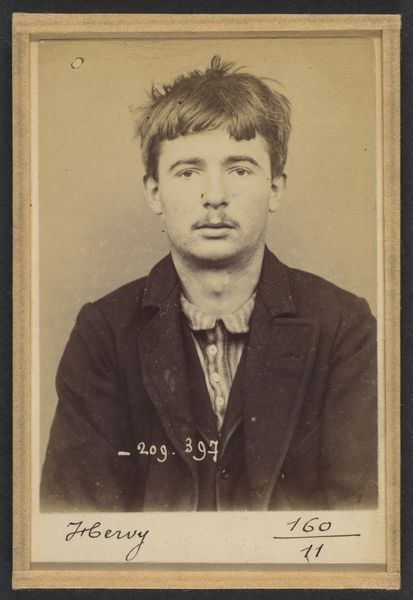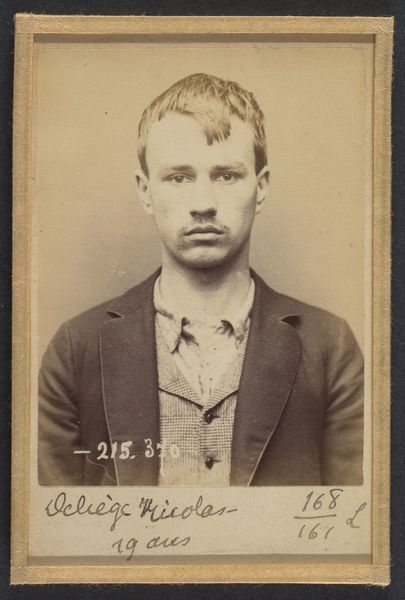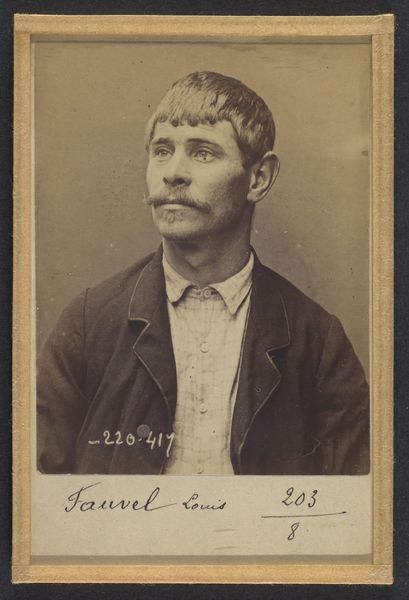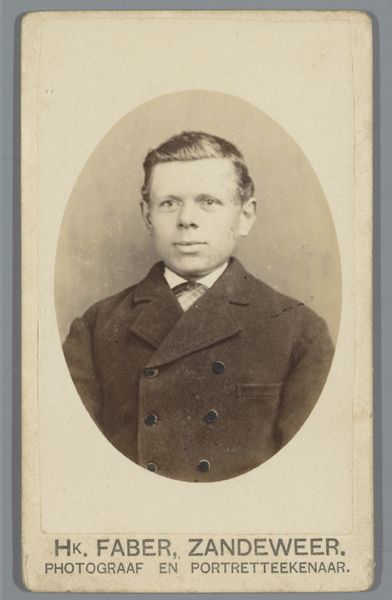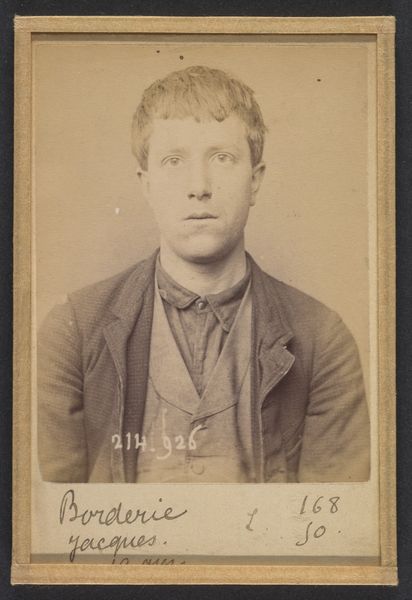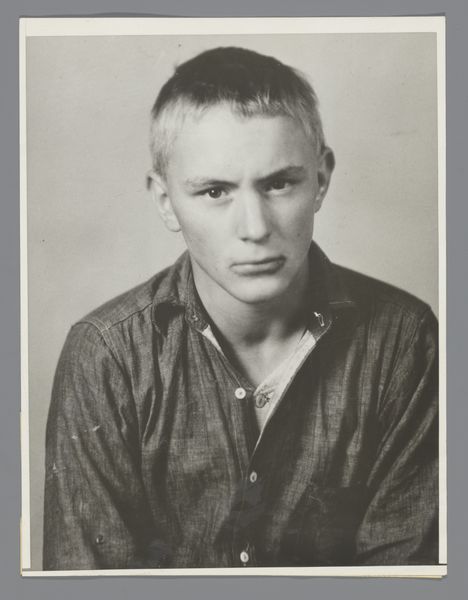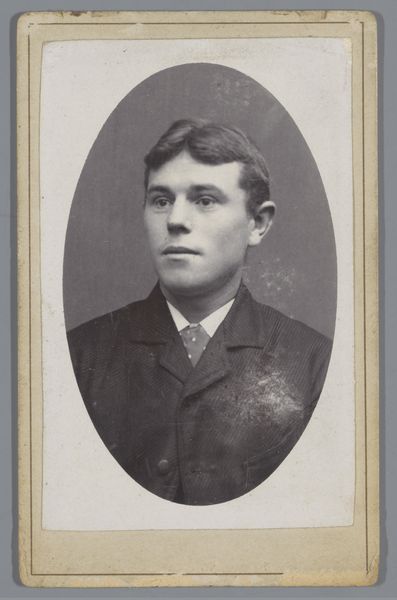
photography, gelatin-silver-print
#
portrait
#
new-objectivity
#
photography
#
gelatin-silver-print
#
modernism
Dimensions: height 112 mm, width 81 mm
Copyright: Rijks Museum: Open Domain
Curator: Here we have a photograph by Oskar Schlemmer, titled "Portret van een onbekende man," made around 1930. It's a gelatin silver print. Rather austere, wouldn't you say? Editor: Austere is one word for it. I find it almost unsettling. The tight framing, the intense stare... it feels like an interrogation. A psychological study captured in shades of gray. Curator: The New Objectivity movement, to which Schlemmer belonged, often aimed to present reality with a detached, almost clinical precision. Considering it's a photograph, it begs the question: what apparatus was involved? What labor was enacted for it to come to life, as opposed to painting? What social conditions facilitated such a portrait? Editor: Precisely! That's what heightens the sense of unease for me. The tonal range is so subtly managed; it draws you into the minutiae of the textures—the grain of the photographic paper, the stubble on his chin, and the curious rigidity in his expression, his almost robotic, geometrical haircut. Schlemmer has a wonderful ability to flatten an image through stark symmetry. Curator: Given Schlemmer's association with the Bauhaus, this reflects a clear turn toward engaging the real world. It is hard to ignore the historical context; The image, itself a product of industry, must grapple with the rising tensions of that era, offering insight into shifts of cultural identity and representation of the working class during interwar Germany. It may even serve as a document for social or labor identity. Editor: Agreed. Beyond its documentarian aspect, I think we have to consider that Schlemmer uses the portrait to flatten or strip back identity as it turns to geometrical expression. Perhaps "Unknown Man" embodies Schlemmer's vision of modern life and industrial process—simplified, perhaps a touch dehumanized through sheer technique. Curator: Fascinating how an ostensibly straightforward portrait opens such diverse interpretive avenues when the object's method is revealed in clear terms. Editor: Yes, considering these angles enriches our experience—making it both deeply personal and broadly historical.
Comments
No comments
Be the first to comment and join the conversation on the ultimate creative platform.
